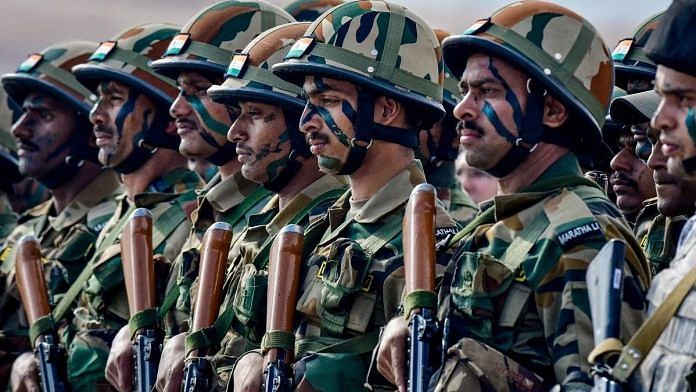Strategically, Operation Parakram taught us that political signalling without credible military capability risks emboldening adversaries rather than deterring them. Mobilising without the means or political freedom to strike exposed us to international pressure, time erosion, and strategic drift. Failure to correct these enduring gaps will restrain us again when decisive action is needed.
Over two decades later, the threats endure, and the stakes are even higher. As India grapples with a complex security environment following the recent Pahalgam terrorist attack, it is vital to ask: Have we imbibed the right lessons over the last 24 years? Are we prepared and ready for the third stage of the escalation matrix, where calibrated punishment becomes necessary to restore deterrence and re-establish strategic credibility?
Much has improved since Operation Parakram. Mobilisation is faster; doctrines have evolved to allow more flexible, limited options. Precision strike capabilities have been strengthened not only through platforms like BrahMos missiles and Rafale aircraft, but also through broader force restructuring—the Navy’s induction of Scorpene-class submarines, the operationalisation of Arihant-class nuclear-powered ballistic missile submarines (SSBN), progress toward operating two aircraft carriers, the Army’s enhancements in mobility and rapid deployment readiness, and the Air Force’s expanded reach, network-centric capabilities, ISR assets, and air defence systems.
Communication networks, satellite surveillance, and UAV deployments have also strengthened real-time decision-making. Jointness has advanced with the creation of the Integrated Defence Staff in 2001 and the appointment of a Chief of Defence Staff in 2020, although integrated theatre commands remain a work in progress.
However, despite these gains, critical gaps endure. Our armed forces remain fundamentally under-resourced relative to the scale and complexity of threats we face. Limited procurements—such as six new Apache helicopters for the Army, a phased induction of the planned 24 MH-60R helicopters for the Navy, and the shortfall in overall IAF inventories—highlight a troubling pattern: token acquisitions rather than comprehensive operational preparedness. In many cases, even inducted capabilities could lack the critical mass needed to alter the strategic calculus or sustain prolonged operations decisively.
Actual military preparedness rests on balancing five interconnected decision processes: effectively employing the current force, maintaining and sustaining it through continuous training and support, developing future capabilities, ensuring robust fiscal planning, and aligning all efforts under clear strategy and policy.
In India’s case, however, budgetary constraints and the push for defence indigenisation risk skewing this balance. Current procurement and planning often emphasise force development for the future—building new capabilities—without adequately resourcing the immediate employment and maintenance of today’s force. The real-world outcome is troubling: limited inductions, lagging maintenance support, and overstretched training pipelines weaken our operational readiness.
These deficiencies directly threaten force employment readiness — the ability to respond decisively to crises that could erupt today, not years from now. Wise future planning must not come at the cost of meeting the current force’s operational needs. Troops in the field, ships at sea, and aircraft on patrol cannot operate on future promises. They require immediate, sustained, and credible support today — in training, equipment, maintenance, and fiscal execution. Building the future force is essential. However, maintaining and employing the current force is existential.
The experience with the Advanced Light Helicopter (ALH) and its variants illustrates a deeper tension within India’s defence procurement philosophy. While the ALH appears to meet success in general-purpose secondary roles, despite recent and recurring hiccups, efforts to expand it into specialised operational domains and primary roles — such as anti-submarine warfare (ASW), anti-surface warfare (ASuW), airborne early warning and control (AEW&C), and electronic warfare/intelligence (ELINT) — have exposed critical limitations. These roles demand platforms specifically designed around endurance, payload, sensor integration, and survivability parameters that an adapted utility helicopter of the type and size of the ALH cannot meet.
Yet procurement policies, driven by well-intentioned but misplaced self-reliance goals, have sometimes forced the services to induct such compromise platforms rather than sourcing or developing purpose-built solutions. Forced fits may achieve symbolic milestones, but they leave operational voids unaddressed. In an environment where carrier battle groups, maritime domain awareness, and cross-border strike operations depend heavily on robust airborne control and surveillance capabilities, the lack of suitable dedicated carrier-based AEW&C platforms, credible maritime ELINT assets, and frontline naval helicopters with true ASW, ASuW, and advanced deck capabilities is a serious operational vulnerability, with strategic implications.
In this context, policies like the Positive Indigenisation Lists and the broader Atmanirbhar Bharat initiative represent vital long-term strategic ambitions to build resilient, self-sufficient capabilities across defence sectors. However, national security imperatives cannot wait for industrial maturity to meet operational demands.
In the unforgiving logic of statecraft, we must build credible deterrence today, not merely aspire to achieve it tomorrow. Lofty goals cannot obscure a complex reality: when the need arises to unsheathe the sword, we must already have it sharpened, maintained, and ready for battle. No adversary will pause provocations to allow us time to build future capabilities. While we exercise strategic patience, we must act with operational urgency. We must recognise that seeking self-sufficiency is not the same as being ready to prevail in immediate conflicts.
Deterrence cannot rest on promises for tomorrow. It demands credible and available capabilities—enough to dissuade adversaries and, if necessary, prevail decisively. Strategic ambitions must align with practical procurement grounded in real-world threat assessments, not symbolic gestures serving industrial policy alone.
Faced with these realities, we must ask a fundamental question: Are we truly invested in achieving decisive outcomes when the sword needs to be unsheathed? We ignore this reality at our peril. Force modernisation must serve both immediate operational readiness and future ambitions. A well-equipped force capable of rapid and proportionate response underpins credible deterrence. Building indigenous capabilities is necessary, as was a stark lesson to us in the aftermath of the sanctions and during Op Parakram. Still, the current force’s operational readiness and effectiveness must remain paramount.
Exercising strategic restraint does not mean India should avoid action when provoked. One of the enduring lessons of Operation Parakram is that deterrence requires more than mobilisation or rhetoric; it demands credible capability as a prelude to the political will to act decisively. In 2001–02, political leaders navigated between the dangers of escalation and the uncertainties of de-escalation. Time eroded our leverage. Today, although strategic calculation rightly guides restraint, prolonged passivity without clearly defined red lines and credible consequences risks inviting further challenges.
Reflecting on those turbulent months when I commanded the naval air station during a national crisis, I am struck by how much we have matured—and how much remains necessary. Then, military shortcomings and economic vulnerability forced caution. Today, our restraint is rooted in greater strength and strategic complexity. Yet the responsibility remains: to match sharpened political will with sharpened capabilities—not just to fight if needed, but to prevail across the battles that matter.
Today, as we face a hostile environment where proxy warfare, salami-slicing, and hybrid threats are common, we must ensure that while we act with responsibility, we do not allow our credibility to erode. Capability matters—but only when matched by clarity of purpose and the will to act. In critical moments—as I learned early in my leadership journey—firmness, clarity, and a willingness to depart from easy conventional paths often make all the difference.
In a world where deterrence hinges as much on perceptions as on hardware, India must ensure that its sword, when needed, is sharp enough—and that both adversaries and allies believe it to be so.
(Edited by Aamaan Alam Khan)








